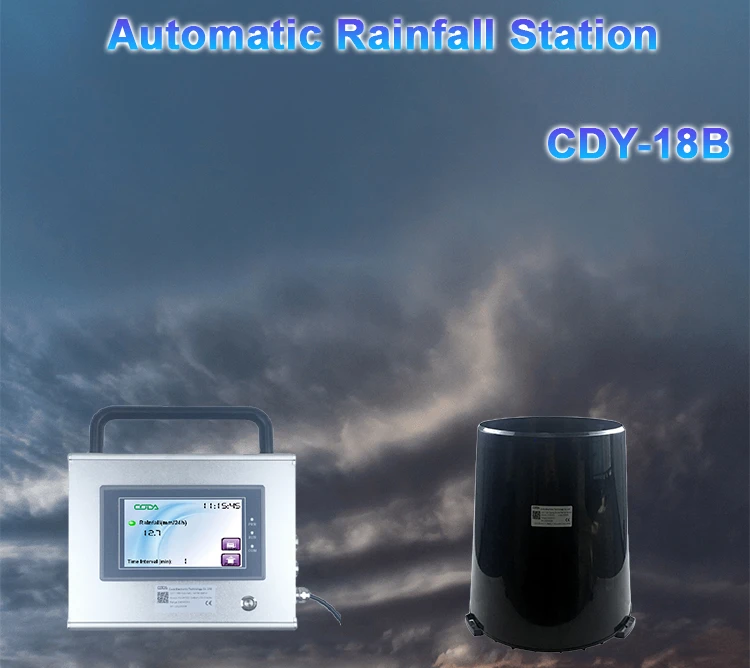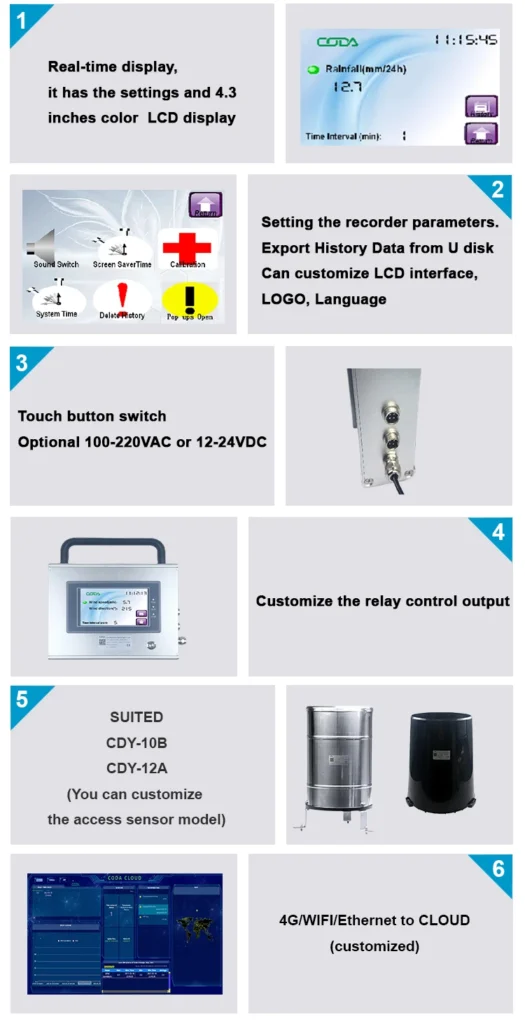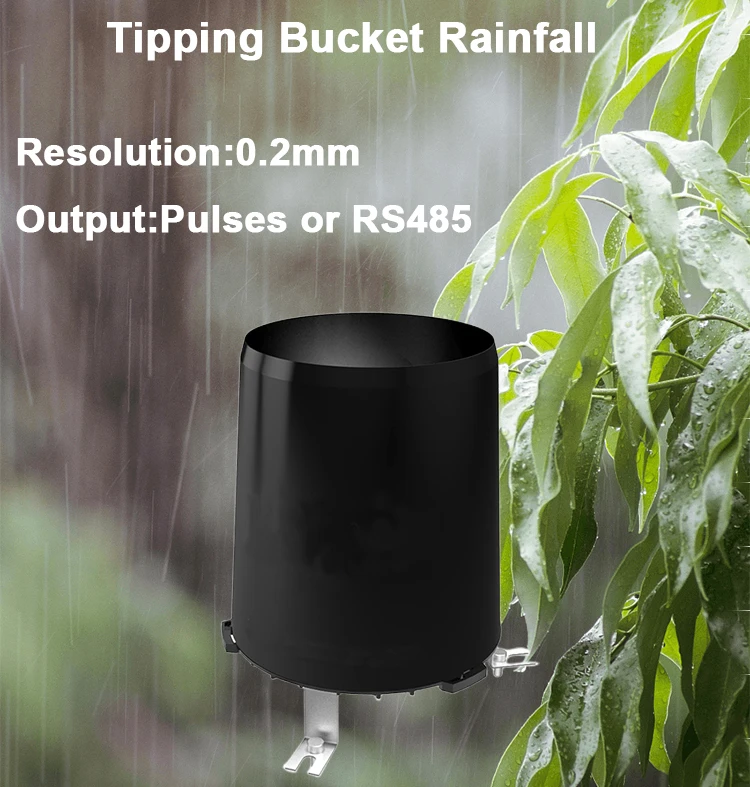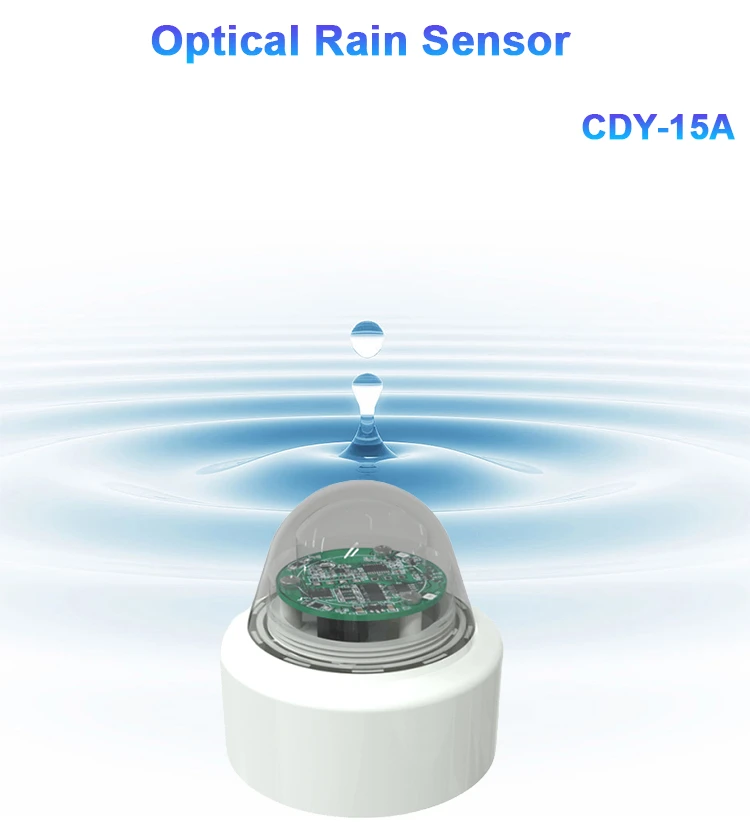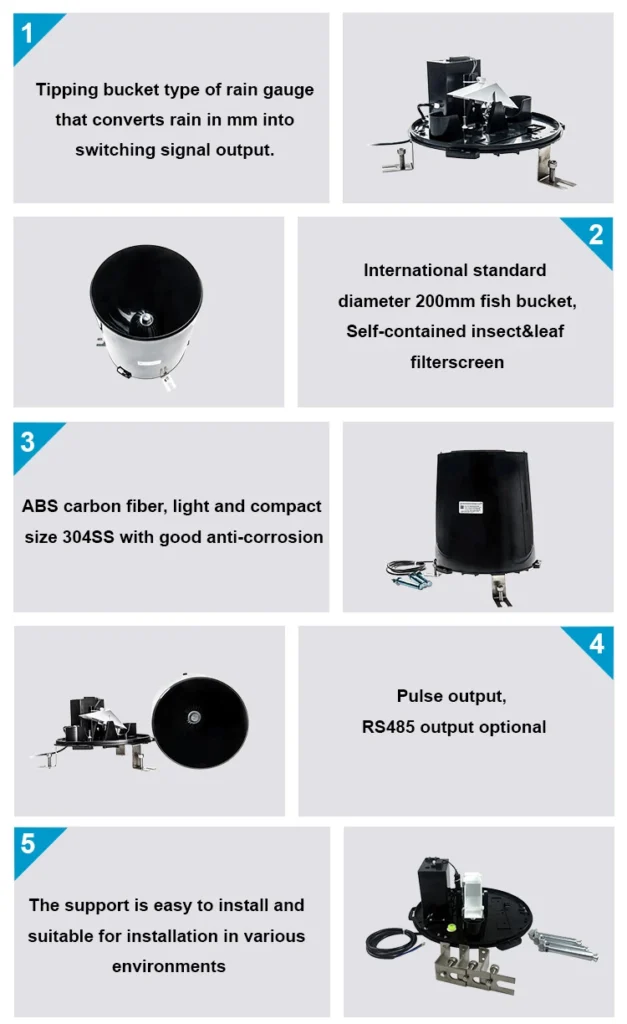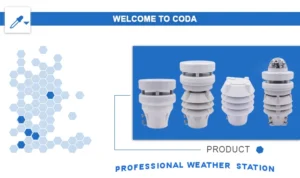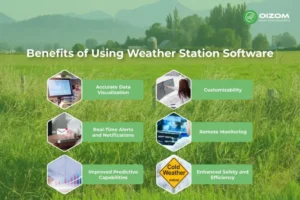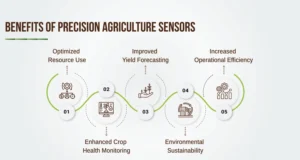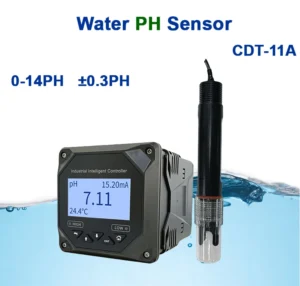Weather Station Rain Gauges: Precisely Quantifying Precipitation
Weather station rain gauges are important for collecting weather data needed for accurate forecasts. Among the many tools used, rain gauges are essential. Their main job is to measure how much rain falls in a certain area.
By using rain gauges, meteorologists and weather fans learn important details about rainfall patterns. These patterns help us understand climate changes and predict future weather. This article looks at the importance of rain gauges in weather stations. It also shows how they help measure rainfall accurately.
The Importance of Rain Gauges in Weather Observations
Rain gauges are important tools in weather stations for many reasons. First, they measure rainfall and provide data on total precipitation over time. These measurements help track local climate trends, spot drought conditions, and study long-term weather patterns.
Rain sensor are important for disaster preparedness, especially for preventing floods. They measure rainfall levels accurately. This helps weather stations give early flood warnings. With these warnings, authorities can take safety measures and evacuate at-risk areas.
Rain gauges also help with sustainable water management. They assist in assessing freshwater resources, which is vital in areas prone to drought.
Types of Rain Gauges and Their Functionalities
Modern weather stations use different types of rain gauges. Each type is designed for specific measurement needs. Below, we provide an overview of some common types.
1. **Standard Rain Gauges**
Standard rain gauges are simple and effective tools. They have a cylindrical container with a wide opening to catch rain. When water collects in the container, we can measure the total rainfall. These gauges are popular because they are easy to use and affordable.
2. **Tipping Bucket Rain Gauges**
Tipping bucket rain gauges offer better accuracy. They have a funnel that directs rainwater into a small bucket. When the bucket tips over from the weight of the water, it measures a specific amount of rainfall. This system allows for ongoing, automatic measurement.
3. **Weighing Rain Gauges**
Weighing rain gauges measure rainfall by calculating the weight of collected rainwater. These gauges have sensitive balance mechanisms for accurate readings. Some advanced models use modern technology and are great for research. However, they are usually more expensive.
4. **Optical Rain Gauges**
Optical rain gauges use advanced sensors to measure how much it rains and for how long. They use lasers or light detectors that can sense water droplets. These devices check how raindrops disrupt light pulses. The information helps us understand the amount and behavior of rain very accurately.
5. **Wireless Rain Gauges**
The growth of digital connections has made wireless rain gauges popular. These gauges have sensors that send rainfall data wirelessly to a main system or display. Removing the need for manual data collection makes monitoring easier and these gauges very user-friendly.
How Rain Gauges Work
Rain gauges are important tools for measuring rainfall. Knowing how they work helps us see their role in weather monitoring. These devices collect rainwater in a special container. This allows us to measure the amount of rain over time accurately.
In a standard rain gauge, there is a cylindrical container with marked intervals. This helps make rainfall measurements easy. By looking at the water level in the container, we can measure the collected rain.
It is important to empty the rain gauge after each rain. This prevents old water from affecting new measurements.
Tipping bucket rain gauges use a seesaw mechanism to measure rainfall. When rainwater fills one side of the bucket, it reaches a certain weight.
The bucket then tips, empties, and resets itself. Each time it tips, it counts as one measurement. The total number of tips shows the amount of rainfall observed.
Weighing rain gauges use load cells or weight systems to measure rainfall. These tools measure the weight of collected water accurately. Some advanced models have features to reduce evaporation effects. This helps provide more reliable results.
Optical rain gauges work in a special way. They use how light interacts with water droplets. When rain falls through the sensor’s field, the droplets reflect, refract, or scatter the light.
We analyze this data to see how strong the rain is and how long it lasts. This gives us clear information about rainfall patterns.
Factors Influencing Rain Gauge Accuracy
Rain gauges are very important for collecting weather data. However, some factors can affect their accuracy. It is important to understand these influences to get accurate readings.
1. **Wind Effects**:
Strong winds can make raindrops miss the gauge or enter it by mistake. This can lead to wrong rainfall measurements. To reduce wind effects, place rain gauges in open and clear areas.
2. **Evaporation**:
Rainwater can evaporate before we measure it. This is common in standard gauges that do not prevent evaporation. This can lead to underestimating rainfall. To reduce this risk, empty the gauge right after it rains.
3. **Installation Height**:
The height of a rain gauge affects how accurate it is. Gauges should be set at ground level in open areas. They should be far from buildings or trees to avoid interference. It is also important to keep them level for even water collection.
4. **Calibration**:
Over time, equipment can wear out and affect measurement accuracy. Regular calibration helps keep things reliable. This is often done by comparing recorded data with reference measurements from nearby weather stations or standards.
5. **Human Error**:
Errors in observation or recording can affect results. To reduce these issues, we can use automated rain gauges. These gauges have wireless data transmission for accurate and steady monitoring.
Tips for Effective Use of Rain Gauges
To get accurate measurements and reliable data, try using these practices:
1. Put your rain gauge in an open area. Make sure there are no buildings or trees nearby. This helps collect accurate rainfall data.
2.Always empty your rain gauge after it rains. This helps reduce errors from evaporation or buildup.
3. Clean the rain gauge often. This will help remove debris or dirt that can affect the measurements.
4. If you can, use several gauges in different places. This will help you see how rainfall varies.
5. Regularly check your gauges to keep their readings accurate and consistent.
Conclusion
Rain gauges are important tools for weather observation and environmental monitoring. They measure how much it rains. These tools can be simple graduated cylinders, tipping mechanisms, weighing systems, or advanced optical sensors. They give us important data for flood prevention, climate studies, and managing water resources.
To get reliable results, it’s important to know how rain gauges work. You should also consider factors that can affect their accuracy. By following best practices and taking care of these tools, rain gauges will give valuable information about weather patterns. This is useful for both meteorologists and weather fans.
